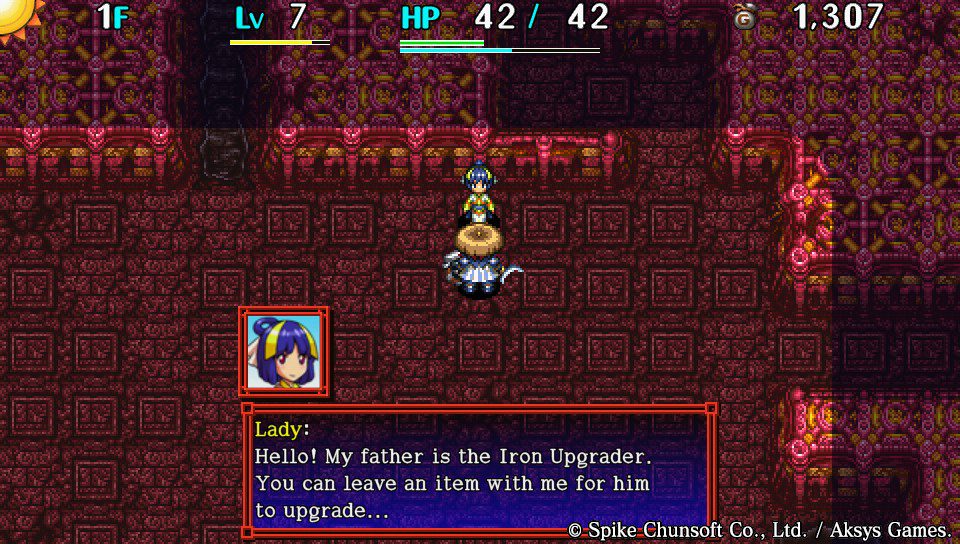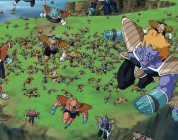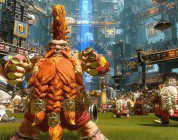Shiren the Wanderer’s next journey on Western shores may seem like the results of an aimless walk, but this warrior and his ferret buddy have been around for quite some time. As a remake of Japan’s 2010 DS game, The Tower of Fortune and the Dice of Fate takes dungeon crawling elements to tell a simple story of wanting the chance to roll the Dice of Fate to change one’s future. Fans of the Pokemon Mystery Dungeon series will feel right at home, but will Shiren’s adventure hold up to the familiarity of Pokemon?
Players start by naming their characters, who by default is Shiren, and spawn in a world where travelers challenge the fabled Tower of Fortune. Those who make it to the top are given a mere chance to test fate and the results may change the course of their life. It’s not really said on the outset why Shiren and his ferret Koppa are doing this, whether he has committed some great travesty or just wants to forget the Super Mario Bros Movie. I like to image its the latter. Needless to say, the plot is rather bare bones in The Tower of Fortune.
Where this game shines is its visual design. Immediately a smile stretched across my face on the opening as memories of classic PSOne games flooded to mind like Alundra, Xenogears, Breath of Fire 3, and other sprite based RPGs. Tower of Fortune’s sprite work and art style really stand out on the Vita. Musically, the game has some memorable tunes that I could see myself humming after a few hours of playing. The crisp lines of the anime characters are excellent too and I would love to see an animation based on this game.
Now, as I mentioned above, the plot is not the driving force of continuing the long climb of playing Tower of Fortune. There are a few strings of dialogue that are fairly endearing, like one boy wanting to save a terminally ill girl, but our hero is little more than the vessel for the dungeon crawling. Here is where things get complicated. There are a ton of mechanics, items, and statuses to learn. So much so, that the tutorials alone took me a couple hours and I still had little clue on what was actually happening. Eager to jump into the game, I left the tutorial after grinding through page after never-ending page to climb the tower, where the game decided to tell me things that the tutorial did anyways.
I assumed that this meant I could’ve skipped the tutorial entirely, but I also enjoy games that teach mechanics through its challenges and Tower of Fortune does not seem to do such. It teaches mechanics frequently enough to drown the player without taking notes and not enough feedback is given through the gameplay. Going through dungeons feels empty, lifeless. There are tons of randomized elements at play in the dungeons, such as item drops, NPC appearances, and more, but all of the dungeons look the same and lack the interesting environments that I usually expect from these grand-scale adventures.
Actually grinding through these dungeons can be addictive, similar to any dungeon crawling focused game. The rouge-like elements at play can make for some great tension, as dying in a dungeon loses all items and experience. It’s a shame, cause I love the visuals and style of Shiren the Wanderer, but the world I was left to play in just felt lacking. I’ve also heard that the game’s main challenge can be finished in about twenty hours or so, which is short for a typical RPG, but just fine for something that’s so heavily mechanics based. The real fun to be had is the attempting the various sides of the towers, Past, Present, and Future, which increase in difficulty. However, there were several times that I felt the game could use a boost in the visual effects department and pacing. Attacks are mostly just sprites bumping into each other and many battles feel boring.
Surprisingly, Shiren’s history in video games is much more interesting than his latest entry. Unfortunately, the character never has caught on internationally, with only a few of his games seeing English releases. However, in Japan the character has been around since the Super Famicom (Super Nintendo) was the system in circulation. As a spin-off of the popular Dragon Quest series, Mystery Dungeon was created after one of the co-creators, Koichi Nakamura, discovered the difficulty of the older PC game Rogue and grew to love its style. From this subset of RPGs, which has spawned everything from the well-known Pokemon Mystery Dungeon Series to Etrian Odyssey, is where Shiren the Wanderer comes in.
The advertisement below shows just how much faith the team had in Nakamura’s games, as the budget is quite high for a video game during those times. It’s also a delightful example of claymation.
Shiren first appeared as a spin-off to the Dragon Quest spin-off on the Super Famicom with his first game, Mystery Dungeon: Shiren the Wanderer, seeing a remake on the DS and being localized later. The Shiren games have spanned multiple consoles in Japan from the Super Nintendo’s broadcast system to the Dreamcast and beyond. As far as English releases, Shiren has only appeared on the DS, Wii, and with Tower of Fortune, the Vita making for three games total.
It is a shame that Shiren hasn’t caught on in the West as his character and history is rich with Japanese folklore. Unfortunately, as much as I enjoy the character’s history, I simply cannot recommend Tower of Fortune to everyone. Players who enjoy the battle system of the Mystery Dungeon games will have some fun, as I’ve heard there are some interesting challenges that arise once the main game is finished. Not only that, but there is an Ad-Hoc and Online Multiplayer mode. This style of RPG rogue-like just is not my favorite style of game, but I imagine that there is a niche, dedicated fan base for Shiren who will enjoy the latest entry. I will add that the Vita is the perfect console for Shiren, as this sort of pick up and go game has great portability. Easy to stop, easy to pick back up, if not a bit over-complicated.
The sharp visual styling of Tower of Fortune could’ve been coupled with a deeper story to better engage a broader player base. Those looking for an interesting Roguelike that focuses on RPG mechanics alone will love Tower of Fortune, while those who need more substance in their RPGs will find moments of boredom and confusion.






